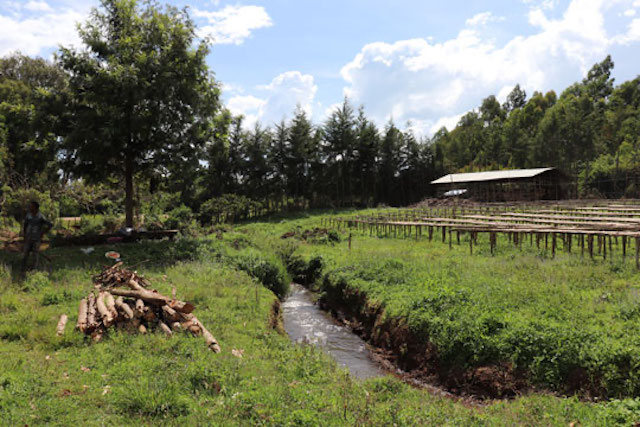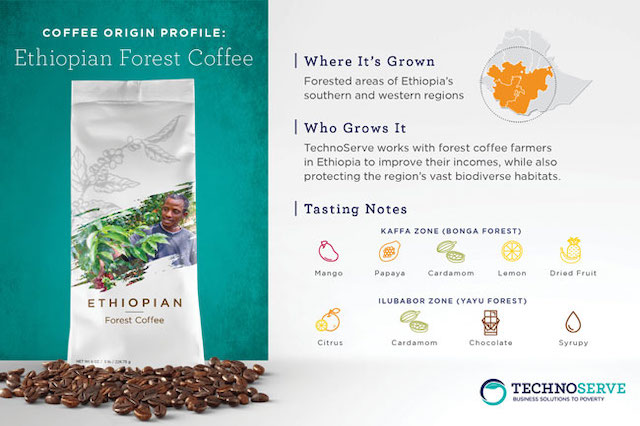Coffee Consumer Spotlight: Ethiopian Forest Coffee
In Ethiopia, wild coffee thrives under dense forest canopies. Since 2018, TechnoServe has been working with Partnerships for Forests to support the farmers who grow this coffee, and the diverse habitats they rely on for their livelihoods.

What is Forest Coffee?
Have you ever tasted “wild-grown” coffee? In the woodlands of southern and southwestern Ethiopia, coffee still exists in its original state – growing wild under a dense forest canopy. Coffee flourishes here, where the Ethiopian plateau slopes down toward the central African lowlands. Ample rainfall and mild conditions support forests and valleys that are teeming with life. Although there are a few small cities, the majority of the region’s population lives in rural farming communities, where coffee is one of the main sources of income.
Despite this ideal geography, coffee farmers in this region face several challenges, including low commodity prices and changing weather patterns. In addition, there are a few challenges specific to forest coffee, which has traditionally been either mixed with farm-grown coffee or processed separately as an inferior product to be sold on the domestic market. Because there is currently little international awareness around forest coffee, there is no premium market for it. As a result, forest coffee hasn’t been seen as a particularly valuable asset to the community and there has been little incentive for people to protect the forests where this coffee grows. In fact, as Ethiopia’s population grew, much of the forest was cleared to plant crops.

Partnerships for Forests
In 2018, TechnoServe and Partnerships for Forests partnered to protect Ethiopia’s ecologically unique and biodiverse habitats, while also increasing the livelihoods of forest coffee farmers. TechnoServe is working to help build an international, high-value market for forest coffee, which will help farmers get a better price for their crop. Through the program, TechnoServe has organized cuppings for international roasters and importers at the Specialty Coffee Association Expo in Boston and the World of Coffee Expo in Berlin. TechnoServe aims to spur the interest of specialty roasters and importers, who purchase coffee at a premium price. With a profitable market for forest coffee, communities will have a strong incentive to protect these biodiverse and ecologically important environments.
Wild forest coffee matures slowly, which brings out a rich, distinct flavor. Wosenech Koyse is a coffee farmer and member of the Fanika cooperative in Bench Maji, Ethiopia. When she tastes her forest-grown coffee, she can easily tell the difference from the typical garden variety. “It is sweeter when I roast it,” she says. The coffee from the Partnerships for Forests program comes from several zones in Ethiopia, including the Illubabor, Jimma, Bale, Kaffa, Bench Maji, and Sheka. The forests in these zones are characterized by dense canopies, mature trees, and a variety of wildlife, including baboons and colobus monkeys.
Tasting Notes
The tasting notes of forest coffee vary from place to place, but the quality of the coffee is very high when it is processed properly. For example, coffee from the Bonga forest, located in the Kaffa zone, has hints of mango, papaya, cardamom, lemon juice, and dried fruit. Coffee from the Yayu forest, located in the Ilubabor zone, has more chocolate, citrus, and syrupy notes.
Although it is still difficult to find forest coffee being sold as forest coffee in the United States, the cooperatives involved in the initiative – especially those around Jimma and Kaffa – produce single-origin coffees that are marketed by specialty roasters. This coffee is either farm-grown or a mix of farm and forest coffee.
Learn more about TechnoServe’s coffee work.



